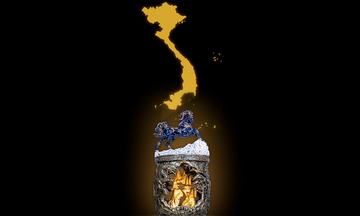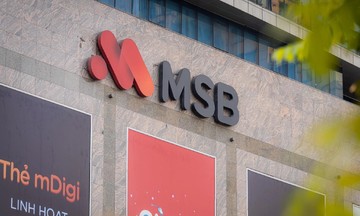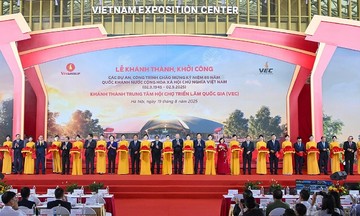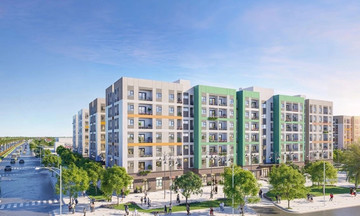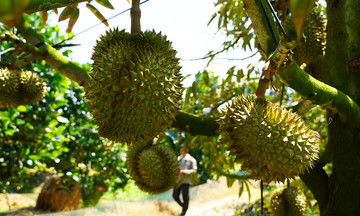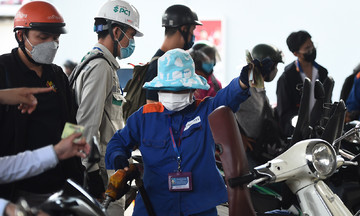In may, DP World launched a direct container shipping route from Can Tho to Cai Mep, covering 200 km in 15 hours. This new option complements the existing 367 km and 235 km road routes, which take 48 and 30 hours respectively.
At a recent seminar during the Vietnam International Logistics Exhibition (VILOG 2025), Ngoc Nguyen, DP World's senior manager of ports and terminals for Southeast Asia, argued that effective use of multimodal transport, combining waterways, railways, and roads, is an effective way to reduce emissions and promote green logistics.
Many experts agree that inland waterways are a promising method for greening the logistics sector. Pham Hai Anh, a member of the executive board of the Vietnam Logistics Business Association (VLA), pointed out that transportation accounts for about 30% of total carbon emissions, with 90% of that coming from road transport.
Meanwhile, Vietnam has nearly 42,000 km of inland waterways. "This presents a favorable condition for developing water transport, a low-emission method capable of carrying large volumes of goods, reducing pressure on roads, and promoting sustainable development," he said.
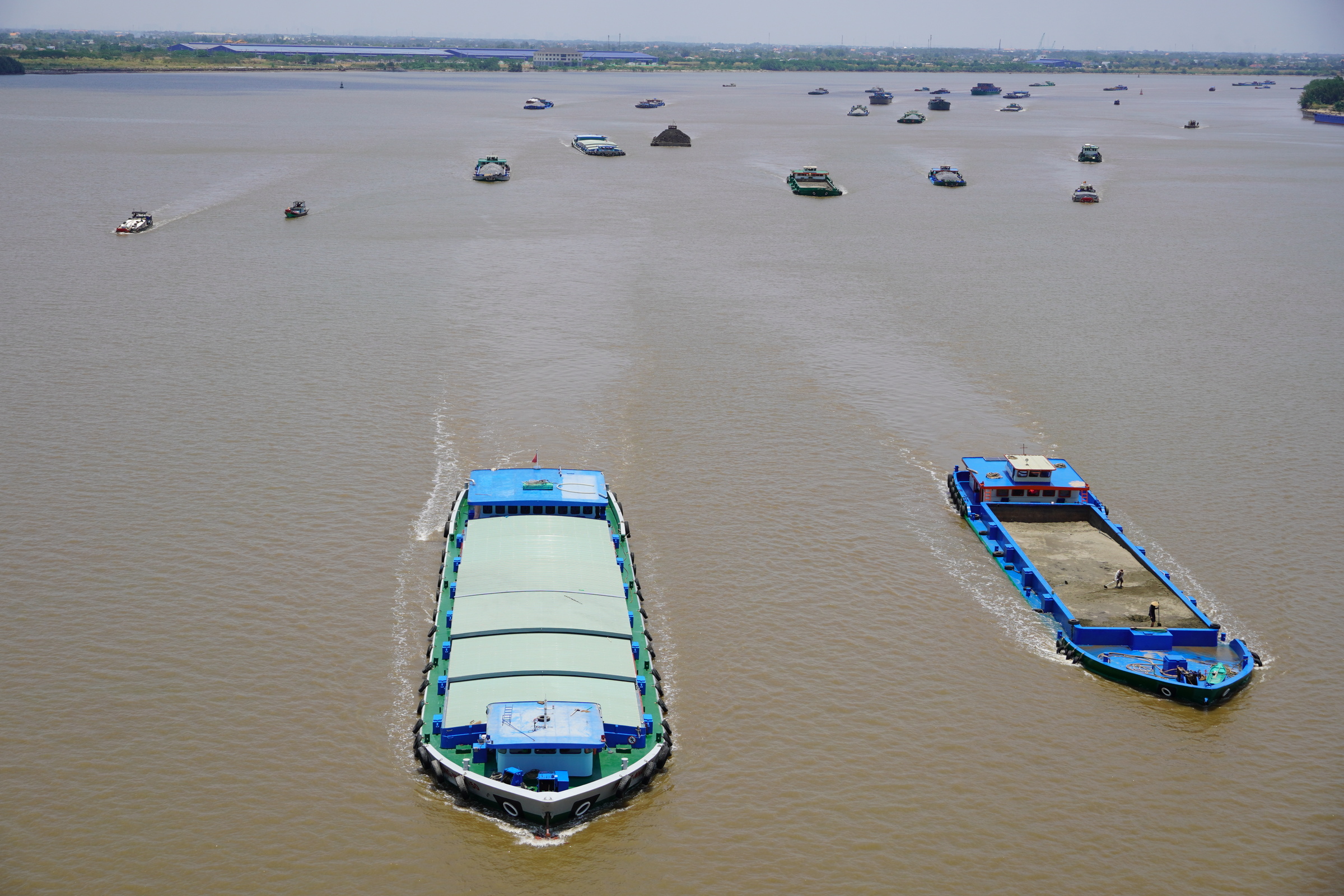 |
Barges on the Vam Co Dong River, passing My Loi Bridge connecting Tay Ninh and Dong Thap, 4/2024. Photo: Hoang Nam |
Barges on the Vam Co Dong River, passing My Loi Bridge connecting Tay Ninh and Dong Thap, 4/2024. Photo: Hoang Nam
Mai Trong Dam, general director of Dang Khoa Logistics, a company specializing in connecting freight routes from Bac Ninh to Hai Phong, said businesses, especially Japanese companies, are seeking green solutions. "They are inviting bids from transport companies to switch methods, making waterways increasingly promising in combined water-road transport," he said.
However, the capacity of river transport remains largely untapped. The Ministry of Industry and Trade's "Vietnam Logistics Report 2024" states that as of 6/2024, the country was utilizing 17,026 km of inland waterways, accounting for 41.2% of the total length of rivers and canals, with 202 cargo ports and 6,274 wharves.
However, the report assesses that inland waterways are still mainly used for transporting low-value goods and have not deeply integrated into the container chain. While there are many ports and wharves, they are small-scale with outdated equipment, and waterway routes are slow to be invested in. Other challenges include complex administrative procedures, a lack of consolidation warehouses, and a lack of standardized vehicles.
As a result, inland waterway transport accounts for only 19% of the freight market share. In the Mekong Delta, 90% of goods to international seaports in Ho Chi Minh City are still transported by road, according to Ngoc Nguyen.
"After two months of operation, our river route hasn't reached full capacity," she said. Similarly, Dam said only 4% of goods from Bac Ninh, a northern industrial center, to ports in Hai Phong are transported by river.
The most promising area is the Southeast, where 75% of goods within the region are transported to Cai Mep Port by waterway. However, this region is experiencing overload at both loading and unloading points. Cai Mep Port, with a design capacity of 7.6 million TEUs per year for the 2020-2023 period, reached 7.1 million TEUs in 2023. In the first six months of this year, output continued to increase by 25%.
The capacity of river routes and inland container depots (ICDs) (such as Truong Tho, Dong Nai, Binh Duong, and Long Binh) is limited. Some facilities have not been upgraded due to prolonged clearance planning, according to Nguyen Van Ha, Sowatco's operations director and director of Sowatco Long Binh Port.
To promote inland waterways, Ngoc Nguyen said it's necessary to change businesses' habits and perceptions about the true costs of road transport (maintenance, risks, traffic congestion, accidents) compared to waterways. Dam pointed out that river transport costs are at least 10% lower than road transport. Container handling costs at seaports are reduced by 50% via waterways, and at ICDs by 30-40%.
According to Nguyen Van Ha, ports need to increase connectivity and cooperation to utilize infrastructure and increase capacity. They also need to upgrade equipment and infrastructure, and apply digital technology to connect ports with waterway vehicles and ICDs, optimizing cargo flow. Key economic zones like the Southeast need to develop more logistics centers and railways connecting to ports.
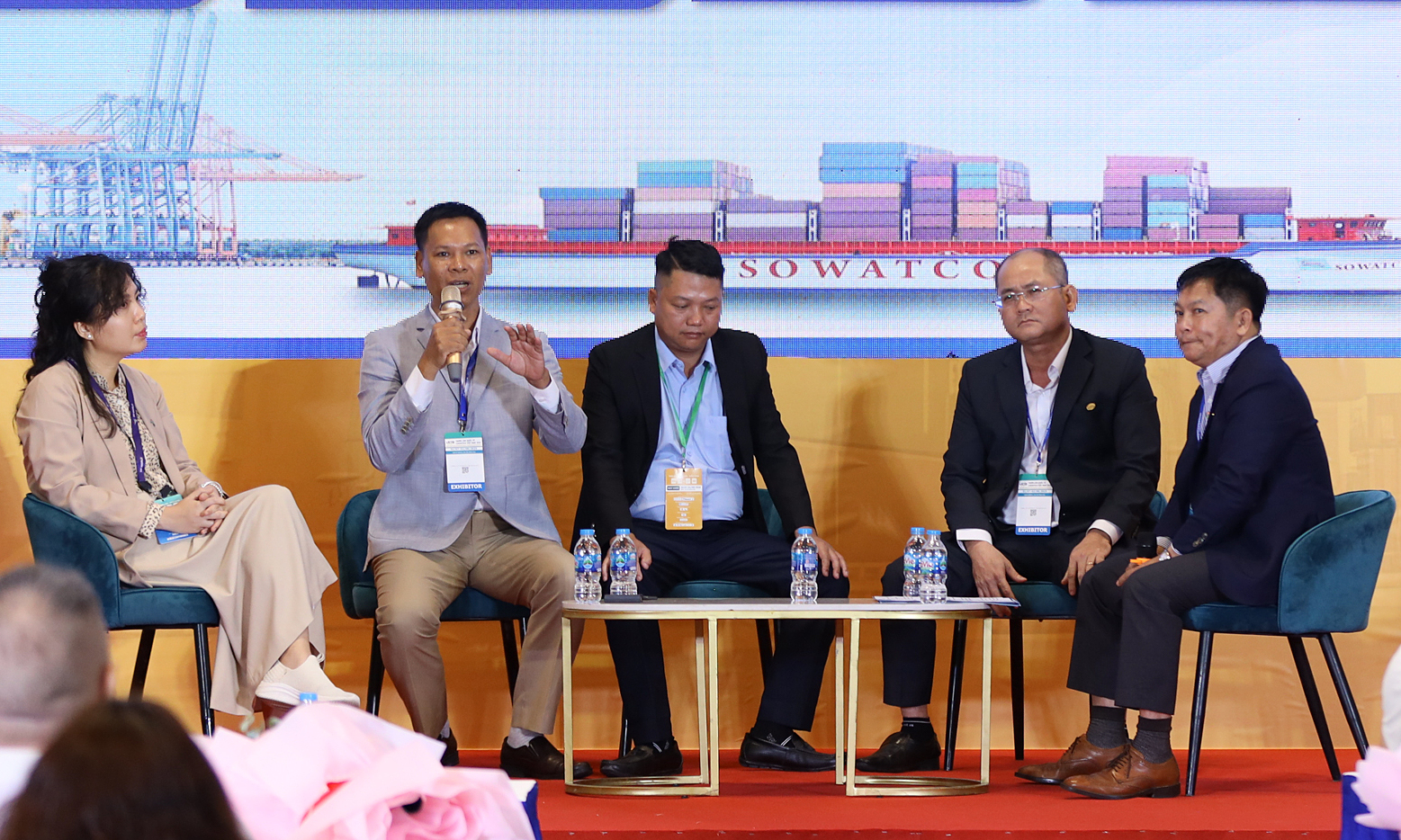 |
From left to right: Ngoc Nguyen, Nguyen Van Ha, Mai Trong Dam, Vu Truong Ton Hien, and Pham Hai Anh at the seminar. Photo: Organizing Committee |
From left to right: Ngoc Nguyen, Nguyen Van Ha, Mai Trong Dam, Vu Truong Ton Hien, and Pham Hai Anh at the seminar. Photo: Organizing Committee
On 19/7, Prime Minister Pham Minh Chinh signed Official Dispatch 113 requesting the promotion of solutions for inland waterway transport development. The Ministry of Construction has been tasked with reviewing and updating the planning of inland waterway and seaport infrastructure, ensuring seamless connectivity with other modes of transport. They are also to apply technology in management and operation, and reform registration, licensing, and vehicle management procedures.
In the long term, experts believe that increasing the proportion of inland waterway transport is not enough for greening. The vehicles themselves need to be more environmentally friendly. Vu Truong Ton Hien, director of shipbuilding company Sowatco, assessed that current fleets are slow in green transition and applying ESG standards.
Sowatco is currently implementing a roadmap to decommission old vessels and build more modern ones, using exhaust gas collection and treatment systems and solar panels for electricity generation. But this is just the first step.
According to Hien, there are three common ship solutions for emission reduction globally. The first is liquefied natural gas (LNG)-powered ships, which reduce carbon emissions by about 30%, emit almost no sulfur, reduce NOx by 85%, and have more durable engines. However, these have high initial investment costs due to imported technology, limited refueling station infrastructure, and the need for highly specialized personnel.
The second is fully electric ships, which have the advantage of zero emissions. However, they have high investment costs, limited range and travel time due to battery capacity, require charging stations at both ends of the route, and have a battery life of under 10 years.
Unlike electric ships, hybrid ships are not limited by range or time. These have both electric and diesel/gasoline engines, which are convenient for low speeds or downstream travel. However, the core issue remains the high investment cost.
"Overall, the infrastructure for green transition (charging stations) is not ready, and the initial investment costs are very high. Currently, the main materials and equipment on ships built in Vietnam are mainly imported. The domestic supporting industry only meets 10-15% of the value of a ship," Hien pointed out.
According to Pham Hai Anh, the cost of building an electric barge is currently three times that of a diesel-powered one. However, the advantage is that operating costs can be halved. "In the current context, I think moving towards investing in hybrid ships is reasonable because while the capital is high, they are flexible and can be charged while running, like hybrid cars," he said.
Vien Thong




